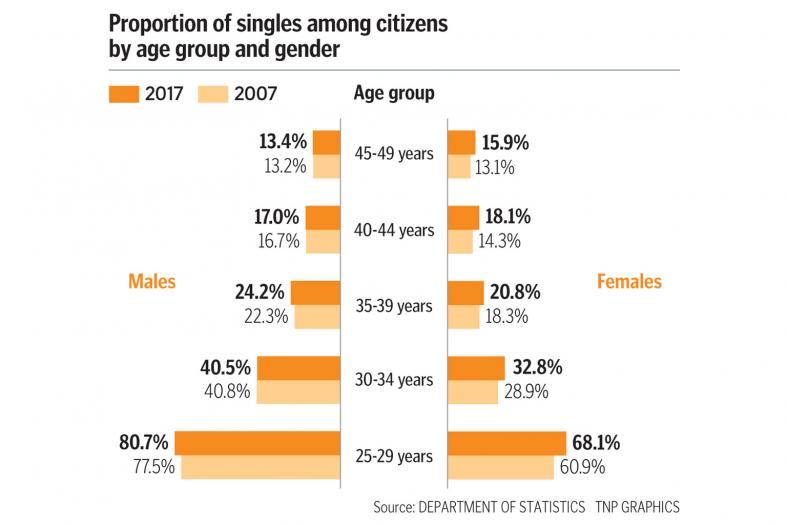More single women in Singapore, key reason for low fertility rate
Expert says this is leading factor in low fertility rate
Fewer Singaporean women tied the knot last year compared with a decade ago, which, an expert said, is the biggest cause for the country's low fertility rate.
The biggest proportion of women staying single is in the prime childbearing years of 25 to 29, according to the annual Population in Brief report released yesterday.
The uptrend coincides with Singapore's total fertility rate plunging to a seven-year low of 1.16 last year, down from 1.20 in 2016. For the population to replace itself without immigration, women need to have an average of 2.1 babies.
"Singleness rate is the most important reason fertility rate in Singapore is low because among those who get married, only 10 per cent do not have any children," said Professor Jean Yeung, director of the Centre for Family and Population Research.
But overall, Singapore's total population for the 12-month period ending in June this year rose to 5.64 million, a 0.5 per cent expansion, compared with the previous period's 0.1 per cent, which was the lowest rate in a decade.
The increase, after taking into account the number of deaths, is from 32,356 Singaporean births and 22,076 new citizens.
But what made experts sit up is the growing share of singles across genders, with the rate of increase for women far exceeding that for men.
It is especially noticeable among women aged between 25 and 29, with the proportion rising from 60.9 per cent in 2007 to 68.1 per cent last year - a jump of 7.2 percentage points.
More older women also stayed unmarried. The figure for those between 30 and 34 went up 3.9 percentage points to 32.8 per cent, while for those aged 40 to 44 it rose by 3.8 percentage points to 18.1 per cent.
Even among men, a bigger proportion in the 25 to 29 age group stayed single: rising from 77.5 per cent a decade ago to 80.7 per cent last year.
In the 35 to 39 age group, the rise is 1.9 percentage points; in the 40 to 44 age group it is 0.3 points and in the 45 to 49 group, it is 0.2 points.
Only the proportion in the 30 to 34 age group fell, dipping 0.3 points to 40.5 per cent last year.
FOR MORE, READ THE STRAITS TIMES TODAY

Get The New Paper on your phone with the free TNP app. Download from the Apple App Store or Google Play Store now


